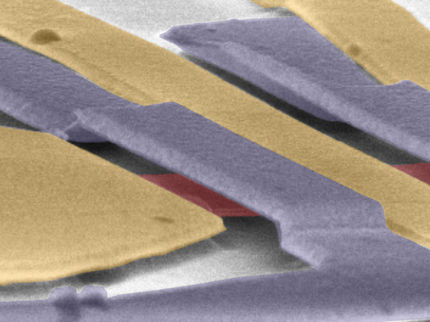Quasi-particle swap between graphene layers
Advertisement
Belgian scientists have used a particle physics theory to describe the behaviour of particle-like entities, referred to as excitons, in two layers of graphene, a one-carbon-atom-thick honeycomb crystal. In a paper published in EPJ B, Michael Sarrazin from the University of Namur, and Fabrice Petit from the Belgian Ceramic Research Centre in Mons, studied the behaviour of excitons in a bilayer of graphene through an analogy with excitons evolving in two abstract parallel worlds, described with equations typically used in high-energy particle physics.
The authors used the equations reflecting a theoretical world consisting of a bi-dimensional space sheet - a so-called brane - embedded in a space with three dimensions. Specifically, the authors described the quantum behaviour of excitons in a universe made of two such brane worlds. They then made an analogy with a bilayer of graphene sheets, in which quantum particles live in a separate space-time.
They showed that this approach is adapted to study theoretically and experimentally how excitons behave when they are confined within the plane of the graphene sheet.
Sarrazin and his colleague have also theoretically shown the existence of a swapping effect of excitons between graphene layers under specific electromagnetic conditions. This swapping effect may occur as a solid-state equivalent of known particle swapping predicted in brane theory.
To verify their predictions, the authors suggest the design for an experimental device relying on a magnetically tunable optical filter. It uses magnets whose magnetic fields can be controlled with a separate external magnetic field. The excitons are first produced by shining an incident light onto the first graphene layer. The device then works by recording photons in front of the second graphene layer, which provide a clue to the decay of the exciton after it has swapped onto the second layer from the first.
Original publication
Other news from the department science

Get the chemical industry in your inbox
By submitting this form you agree that LUMITOS AG will send you the newsletter(s) selected above by email. Your data will not be passed on to third parties. Your data will be stored and processed in accordance with our data protection regulations. LUMITOS may contact you by email for the purpose of advertising or market and opinion surveys. You can revoke your consent at any time without giving reasons to LUMITOS AG, Ernst-Augustin-Str. 2, 12489 Berlin, Germany or by e-mail at revoke@lumitos.com with effect for the future. In addition, each email contains a link to unsubscribe from the corresponding newsletter.































































